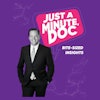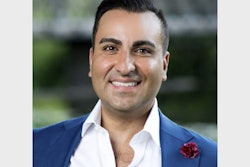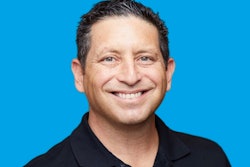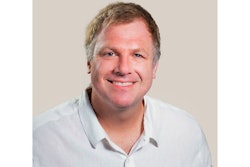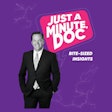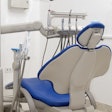One of the most profound shifts we’ve seen in the dental industry is the rise of dental service organizations (DSOs) as a viable and highly strategic transition path for many dentists. While not every dentist follows the same journey, everyone has the potential to thrive in the right DSO partnership, depending on their goals, mindset, and timing.
After thousands of conversations with dentists at all stages of their careers, there are common traits among those who transition most successfully.
Whether you're exploring options for growth, a better work-life balance, or a long-term exit strategy, understanding these patterns can help you evaluate if a DSO partnership could align with your future.
The strategic, entrepreneurial-minded doctor
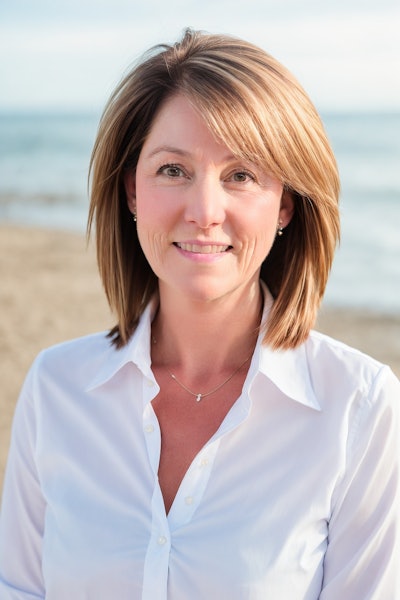 Kim McCleskey.
Kim McCleskey.
These doctors see their practice not just as a place to treat patients but as an asset. Dentistry is both a profession and a business. They recognize this, treating their practice as a vehicle for long-term value creation.
What sets these doctors apart is curiosity and vision. They ask smart, forward-looking questions: “What’s my enterprise value?” “How could a partnership help me scale?” and “Where can this go beyond me?”
Increasingly, I’m seeing this mindset not only among younger doctors who’ve grown up with a more entrepreneurial lens but also among seasoned owners who are looking to make their practice work harder for them.
Timing is especially critical with the current pace of consolidation. PTS’ industry analysts estimate that the majority of dental consolidation will be complete within the next five years, and we’re already well into that window. This is a once-in-a-generation opportunity to take part in value creation before the market matures and options become more limited.
Those who move early have a chance to choose among multiple partners, negotiate from a position of strength, and align with DSOs that match their vision. The right DSO partnerships don’t just simplify operations but unlock new levels of growth.
Some doctors take it further by joining sub-DSO structures -- an option that appeals to entrepreneurial-minded owners. In this model, a new entity is formed under the larger DSO umbrella and the doctor retains equity in the sub-organization rather than at the top-level holding company.
It’s a hybrid approach that blends the scale and support of a national platform with the autonomy, leadership, and upside of localized ownership. For doctors who want to keep building (just with more capital and less risk), this structure can be an ideal fit.
For example, in 2017, a $1.8 million Midwest practice originally pursued an individual sale with plans to stay on as an associate. But after deeper discussion, it became clear the owner wasn’t ready to slow down, and a DSO was a better fit.
We introduced him to a regionally focused group using a hub-and-spoke model, some of whose specialists he was already referring to. He sold 100% of the practice and rolled 25% into the sub-DSO. The decision paid off: The group outperformed financially, and he gained access to a strong local network and support system that would’ve been difficult to replicate in a holding company or joint venture-style deal.
Ultimately, the key is to know your risk tolerance and stay informed. Surround yourself with industry-specific advisers who understand the landscape and can help you evaluate how a DSO partnership might align with your business goals.
Doctors who aren’t ready to retire right away
Many DSOs typically ask for a multiyear commitment -- often three, five, or seven years -- but that doesn’t mean your work has to end when the contract does. In fact, many doctors choose to continue working with their DSO partner indefinitely, right up until retirement.
This isn’t a “sell and sail into the sunset” situation. Instead, it’s a chance to keep practicing (minus the administrative stress), earn a salary, participate in incentives, and sometimes roll equity into the larger organization.
Flexibility is also a key benefit, since DSOs are not geographically restrictive. For example, one doctor chose to commit to a five-year term in a small-town practice to stay through a family milestone.
As part of the agreement, the DSO offered options to relocate to Colorado, Utah, or Arizona once that commitment was fulfilled. Just because you want to move doesn't mean you're locked in for five years in those four walls.
I can’t tell you how many times I’ve heard from practice owners, “I wish I had started this process five years ago.” Even if retirement isn’t on the near horizon, this is the right time to begin the conversation.
Getting a valuation early helps you understand what your practice is worth today and how timing, growth, and market dynamics could impact that value over time. Starting now gives you more leverage, more options, and more control.
If you’re still passionate about clinical care but want to offload the business headaches, this is a great lane.
The burned-out, business-weary doctor
Some of the most relieved and grateful doctors I’ve worked with are ones who were tired of managing the operational demands of ownership, such as human resources, billing, compliance, marketing, and more.
The constant pressure of running a business can wear down even the most dedicated professionals. These doctors still love practicing dentistry, but they want their evenings back. They want to coach soccer, see their grandkids, or just take a breath. They want better work-life balance.
When that operational weight is lifted, the mental return on investment is immediate. One pediatric dentist once told me, “I want a partner so I can be able to take a vacation with my family.” That’s what the DSO model can deliver: real infrastructure and real support so you can refocus on your life and your well-being.
But it’s not just about time, it’s also about protection. DSOs offer risk management and professional continuity that solo owners simply can’t match.
If you're the only doctor in your practice and something unexpected happens -- say you break your arm mountain biking -- you’re stuck. But in a DSO platform, you’re part of a larger clinical network. Associates and other doctors can step in to help maintain patient care and revenue while you recover.
Dentistry is a high-stress profession. In fact, it has one of the highest suicide rates of any medical field. That alone should be a wake-up call about the toll of trying to carry everything on your own. For doctors who value stability, flexibility, and professional support, a DSO transition isn’t just a smart move, it’s a life-changing one.
Doctors planning a thoughtful exit in two to three years
If you’re thinking of transitioning within the next few years, now is the time to start exploring your options. Some groups will consider shorter timelines, but a longer lead time usually means a better outcome.
This stage is about maximizing value and control. A phased exit, where you stay on for a few years post-transaction, can ease the transition for your team and patients while setting you up for a more secure retirement.
The transaction process itself often takes longer than expected. By the time you complete a valuation and take the practice to market, you’re looking at at least three to six months before a transaction closes.
That timeline eats significantly into a two-year window. Starting early is critical. In addition, by starting early, practice owners can be more discerning with the offers that come in, giving them the upper hand.
Financial planning is equally important. Surprisingly, about 90% of the doctors I speak with don’t know what they actually need to retire comfortably. Understanding your retirement needs and financial preparedness can help you make smarter decisions and avoid last-minute surprises.
The current pace of consolidation also adds a strategic layer to timing. As more practices align with DSOs, the pool of potential buyers and the flexibility of deal terms shifts. For dentists on a two- to three-year timeline, this is a narrowing window to enter the market while multiples are still strong and partners are still competing for practices.
Starting the process now positions you to take advantage of today’s demand rather than risk becoming an afterthought in a more saturated, mature market.
Multilocation or group practice owners
If you’ve already built a group, you know how hard it is to scale, as well as how much your infrastructure matters. DSOs love working with groups that have solid systems in place and a proven track record of growth.
DSOs are especially attracted to practices that demonstrate operational maturity, meaning financials are transparent and reliable, systems have been effectively duplicated across locations, and day-to-day operations run smoothly without constant oversight.
These types of doctors often get strong valuations and may even be offered regional leadership or platform-building roles. They’ve done the hard work on the front end. Now, it’s about finding the right strategic partner to take things to the next level.
Working with a broker who specializes in dental consolidation is essential. A knowledgeable, industry-specific adviser can help position your group for maximum value, navigate complex deal terms, and ensure you’re aligned with the right type of partner for your long-term vision.
Clinically excellent doctors who want to mentor
Not every doctor is chasing an exit. These are the clinicians who love what they do and want to keep doing it, with more support, more collaboration, and more opportunity to lead.
For these doctors, DSOs offer a path to growth through mentorship, continuing education, and meaningful leadership. The best DSOs understand that growth comes from within. They’re looking for doctors who want to invest in associates, lead clinical teams, and shape the future of care.
Recruitment is a key part of that equation. DSOs bring value through their dedicated recruiting arms by sending resumes, screening candidates, and ensuring the right cultural and clinical fit. Doctors don’t have to take on the heavy lift of hiring alone.
DSOs also maintain continuity with regular clinical team Zoom meetings, administrative check-ins, and cross-location collaborations. For doctors passionate about academia or teaching, DSOs can offer powerful platforms to contribute and mentor on a much larger scale than solo or small group practices allow.
Beyond clinical mentorship, many DSOs offer unique leadership roles and opportunities, which can be a refreshing change from the day to day. I’ve seen groups build entire recruitment plans around a seller’s goals, even inviting them to head up philanthropy initiatives or clinical councils.
These docs thrive because they don’t just want to leave a legacy. They want to build it, hand in hand with a support system.
Final thoughts
While not every dentist follows the same journey, most practice owners have the potential to thrive in the right DSO partnership, depending on their goals, mindset, and timing. Whether you're an entrepreneurial owner, a group practice leader, a clinician eager to mentor or someone simply ready to let go of the business stress, there is a path forward that can align with your values and vision.
The doctors who succeed in these transitions aren’t all the same. But they do share some key traits: clarity about what they want, belief in the value they bring, openness to growth, and a willingness to explore the options available to them.
You’ve built something incredible. Now it’s time to think about what comes next and how you want to get there.
Kim McCleskey is a practice transition consultant with Professional Transition Strategies. She has worked in dentistry for more than 30 years and is a certified professional business coach. She can be reached at [email protected].
The comments and observations expressed herein do not necessarily reflect the opinions of DrBicuspid.com, nor should they be construed as an endorsement or admonishment of any particular idea, vendor, or organization.

